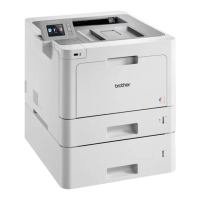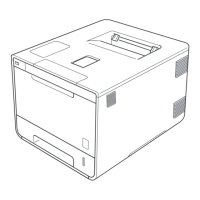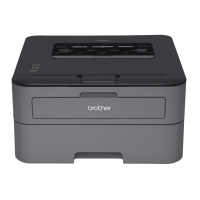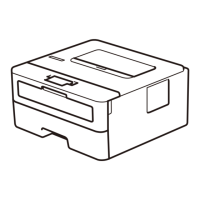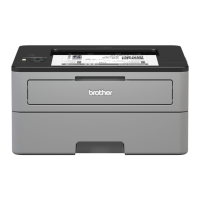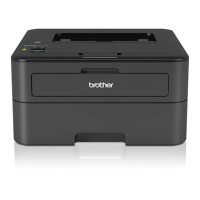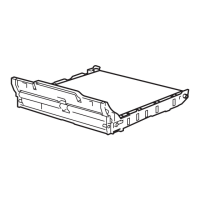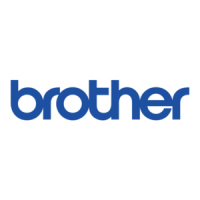
 Loading...
Loading...
Do you have a question about the Brother HL-L9310CDW and is the answer not in the manual?
| Display | LCD |
|---|---|
| Control type | Touch |
| Built-in display | Yes |
| Display diagonal | 2.7 \ |
| Market positioning | Business |
| Maximum duty cycle | 80000 pages per month |
| Recommended duty cycle | - pages per month |
| Replacement cartridges | TN-910BK TN-910C TN-910M TN-910Y |
| Number of print cartridges | 4 |
| Page description languages | BR-Script 3, PCL 6, PDF 1.7, XPS |
| Linear (1D) barcodes supported | Codabar, Code 128A, Code 128B, Code 128C, Code 39, Code 93, Facing Identification Mark, GS1 DataBar, ISBN, Interleaved 2 of 5, MSI, POSTNET, UPC-A, UPC-E |
| Sound power level (standby) | 60 dB |
| Sound power level (printing) | 65.5 dB |
| Sound pressure level (printing) | 49 dB |
| Sound pressure level (quiet mode) | 44 dB |
| N-up printing | 2, 4, 9, 16, 25 |
| Print technology | Laser |
| Maximum resolution | 2400 x 600 DPI |
| Duplex printing mode | Auto/Manual |
| Time to first page (black, normal) | 15 s |
| Print speed (color, normal quality, A4/US Letter) | 31 ppm |
| Duplex print speed (black, normal quality, A4/US Letter) | 14 ppm |
| Envelopes sizes | 10 |
| Custom media width | 76.2 - 215.9 mm |
| Custom media length | 127 - 355.6 mm |
| Paper tray media types | Bond paper, Envelopes, Glossy paper, Labels, Letterhead, Plain paper, Recycled paper |
| Paper tray media weight | 60 - 105 g/m² |
| Non-ISO print media sizes | Executive (184 x 267mm), Legal (media size), Letter (media size) |
| ISO A-series sizes (A0...A9) | A4, A5, A6 |
| Multi-purpose tray media types | Bond paper, Glossy paper, Letterhead, Plain paper, Recycled paper |
| Maximum ISO A-series paper size | A4 |
| Paper tray media weight (imperial) | 16 - 28 lbs |
| Multi-Purpose Tray media weight (imperial) | 16 - 43 lbs |
| Total input capacity | 300 sheets |
| Total output capacity | 150 sheets |
| Maximum input capacity | 2380 sheets |
| Paper tray 1 input capacity | 250 sheets |
| Total number of input trays | 1 |
| Multi-Purpose tray input capacity | 50 sheets |
| Authentication method | LDAP, ActiveDirectory, RADIUS |
| Online services supported | Dropbox, Google Drive |
| Dimensions (W x D x H) (imperial) | 17.4 x 19.1 x 12.3 \ |
| Package depth | 603 mm |
| Package width | 642 mm |
| Package height | 578 mm |
| Package weight | 26800 g |
| Wi-Fi standards | 802.11b, 802.11g, Wi-Fi 4 (802.11n) |
| Cabling technology | 10/100/1000Base-T(X) |
| Security algorithms | 64-bit WEP, 128-bit WEP, 802.1x RADIUS, AES, EAP-FAST, EAP-TLS, EAP-TTLS, IPSec, LEAP, PEAP, SMTP-AUTH, SNMPv3, SSL/TLS, TKIP, WPA-PSK, WPS |
| Ethernet LAN data rates | 10, 100, 1000 Mbit/s |
| Mobile printing technologies | Apple AirPrint, Brother iPrint & Scan, Google Cloud Print, Mopria Print Service |
| Supported network protocols (IPv4) | ARP, RARP, BOOTP, DHCP, APIPA(AutoIP), WINS/NetBIOS name resolution, DNS Resolver, mDNS, LLMNR responder, LPR/ LPD, Custom Raw Port/Port9100, IPP/IPPS, FTP Server, TELNET Server, HTTP/HTTPS server, TFTP client and server, SMTP Client, SNMPv1/v2c/v3, ICMP, Web Services (Print), CIFS client, SNTP client, LDAP |
| Supported network protocols (IPv6) | NDP, RA, DNS resolver, mDNS, LLMNR responder, LPR/LPD, Custom Raw Port/ Port9100, IPP/IPPS, FTP Server, TELNET Server, HTTP/HTTPS server, TFTP client and server, SMTP Client, SNMPv1/v2c/v3, ICMPv6, Web Services (Print), CIFS Client, SNTP Client, LDAP |
| USB connector | USB Type-A |
| USB 2.0 ports quantity | 3 |
| Server operating systems supported | Windows Server 2008 R2, Windows Server 2012, Windows Server 2012 R2, Windows Server 2016 |
| Windows operating systems supported | Windows 10, Windows 7, Windows 8 |
| Included cartridge capacity (black) | 6500 pages |
| Power consumption (ready) | 70 W |
| Power consumption (printing) | 580 W |
| Energy Star Typical Electricity Consumption (TEC) | 1.8 kWh/week |
| Sustainability certificates | Blue Angel, ENERGY STAR, Nordic Swan Ecolabel |
| Depth | 486 mm |
|---|---|
| Width | 441 mm |
| Height | 313 mm |
Explains the purpose and scope of the technical reference manual for HL-Series printers and its compatibility with PCL5e.
Outlines four general application areas for HL-Series printers, including word processing, graphics, and programming.
Provides a comprehensive list of PCL commands, categorized by function and escape sequences.
Introduces the PCL emulation capabilities of the HL Series printer, including raster and vector graphics, fonts, and page control.
Details control codes and escape sequences used to operate the printer, including backspace, line feed, and carriage return.
Covers commands related to managing print jobs, such as page size, media type, and output tray selection.
Explains font types, sources, and selection commands, including bitmap and scalable fonts, symbol sets, and pitch.
Describes commands for creating graphic images, including source, pattern, destination, rectangles, and raster graphics.
Details the purpose, definition, running, and handling of macros, including deleting and saving them.
Explains features for requesting printer status, such as memory, entity, and status responses.
Provides an alphabetical index of terms and commands covered in the manual.
Describes enhanced commands for PCL5C emulation and its compatibility with PCL5e.
Explains B/W, Simple Color, PCL Color, and HP-GL/2 Color modes, and how to use palettes for color selection.
Details commands for setting color #1, #2, #3, and managing the palette for color graphics.
Covers commands for raster transfer, destination settings, scale algorithms, and entering HP-GL/2 mode for color graphics.
Explains commands for setting render algorithms, monochrome mode, gamma correction, and downloading dither matrices.
Introduces HP-GL/2 commands like Initialize Set Instruction, Pen Color, Number of Pens, and Color Range.
Provides an alphabetical index of terms and commands specific to PCL5C.
Lists HP-GL commands with their functions, such as DF, IN, IP, SC, IW, RO, PU, PD, PA, PR.
Explains that HL Series printers can produce vector graphics output using HP-GL/2 commands and uses 1/1016" as the default measurement unit.
Defines key terms used in HP-GL graphics language, including Picture Frame, Anchor Point, Graphics Window, and Pens.
Details the syntax and structure of HP-GL commands, including mnemonics, parameters, separators, and terminators.
Describes units, scaling points P1 and P2, scaling, and transformation for defining the graphics window.
Covers setting up the graphics window, using existing image plots, printing images, and entering/quitting HP-GL/2 mode.
Provides detailed explanations of HP-GL commands, including initialization, plot area settings, pen control, polygon group, plot function, and character plot instructions.
Provides an alphabetical index of terms and commands specific to HP-GL.
Introduces Printer Job Language (PJL) for job status control and its five major features.
Explains the requirements for using PJL commands correctly, including job structure and syntax.
Lists PJL commands categorized into Kernel, Job Separation, Environment, Status Readback, and Device Attendance commands.
Explains basic PJL kernel commands like UEL, EXECUTE, COMMENT, and ENTER for job control.
Describes JOB and EOJ commands for determining job boundaries and sending status information.
Details printer environments, including Factory Default, User Default, PJL Current, and Modified Print environments.
Explains commands for requesting printer status, such as INQUIRE, DINQUIRE, ECHO, INFO, USTATUS, and USTATUSOFF.
Covers commands for changing display messages on the printer control panel, such as RDYMSG, OPMSG, and STMSG.
Provides an alphabetical index of terms and commands specific to PJL.
Lists commands for Epson FX-850 emulation, including control codes and escape sequences.
Explains how to control HL-Series printers using emulation modes like HP LaserJet, Epson FX-850, and IBM Proprinter XL.
Details important points for using Epson FX-850 mode, including ignored commands and resolution.
Defines conventions used in the Epson FX-850 emulation description, such as syntax and data conventions.
Explains how to control the printer using commands or the control panel, and the use of control codes and escape sequences.
Covers basic printer operations, page setup, line spacing, tabs, standard characters, customized characters, and graphics.
Provides an alphabetical index of terms and commands specific to Epson FX-850 emulation.
Lists commands for IBM Proprinter XL emulation, including control codes and escape sequences.
Explains how to control HL-Series printers using emulation modes like HP LaserJet, Epson FX-850, and IBM Proprinter XL.
Details points to consider when using IBM Proprinter XL mode, including ignored commands and resolution.
Defines conventions used for syntax and data representation in the IBM Proprinter XL emulation description.
Covers basic printer operations, page format, using characters, and graphics for IBM Proprinter XL emulation.
Provides an alphabetical index of terms and commands specific to IBM Proprinter XL emulation.
States that HL Series printers can print bar codes in various emulation modes.
Describes the ESC i n ... n \ command for creating bar codes and expanded characters.
Details parameters for bar code commands, including bar code mode, style, scaling, and data start identifiers.
Provides example program listings for printing bar codes and expanded characters.
Lists HP-GL commands with their functions, such as DF, IN, IP, SC, IW, RO, PU, PD, PA, PR.
Explains that HP-GL graphics mode emulates HP 7475A plotter instructions and uses 1/1016" as the default measurement unit.
Defines key terms used in HP-GL graphics language, including Picture Frame, Anchor Point, Graphics Window, and Pens.
Details the syntax and structure of HP-GL commands, including mnemonics, parameters, separators, and terminators.
Describes units, scaling points P1 and P2, scaling, and transformation for defining the graphics window.
Covers setting up the graphics window, using existing image plots, printing images, and entering/quitting HP-GL/2 mode.
Provides detailed explanations of HP-GL commands, including initialization, plot area settings, pen control, polygon group, plot function, and character plot instructions.
Provides an alphabetical index of terms and commands specific to HP-GL.
Explains the function's ability to print multiple copies with different paper trays or macros per copy.
Details the functions of carbon copy mode, number of copies, paper tray selection, and additional macro settings.
Provides details on usable emulations, tray selection, duplex settings, user-defined paper, reprint function, and spool data.
Provides a comparison of PCL5 paper sizes supported by various HL series printer models.
Compares tray command support for PCL5 when PJL TRAYCOMMAND is NORMAL.
Compares tray command support for PCL5 when PJL TRAYCOMMAND is SPECIAL.
Lists other PCL5 specific features and commands.
Details typeface selection for PCL, showing supported typefaces across various HL series models.
Provides a comparison list of HP-GL/2 commands supported by different HL series printer models.
Compares command support for Epson FX-850 emulation across various HL series printer models.
Compares command support for IBM Proprinter XL emulation across various HL series printer models.
Lists supported bar code commands across various HL series printer models.
Lists supported HP-GL commands across various HL series printer models.
Lists supported PJL commands across various HL series printer models.
Lists general PJL environment variables and their support across different HL series printer models.
Introduces Flash/Card commands applicable to specific HL Series printers and lists supported device types.
Explains how to read command descriptions, available devices, and error codes.
Details commands for selecting storage devices, formatting, saving data, fonts, and macros.
Explains how to use card commands for executing macros and downloading fonts from PCL.
Explains how to use card commands for PostScript emulation, including specifying hard disks.
Explains HBP mode commands and their syntax, including meanings of codes and parameters.
Details the command to enter HBP mode and the conditions under which it operates.
Lists HBP commands and their functions, including resolution, economy mode, sleep mode, and mode settings.
Provides recommended command strings for two-page print jobs utilizing HBP mode.
Covers general specifications and command reference for MX-2000 series Mailbox units.
Describes the Mailbox unit as an option for HL printers and its functions as a stacker, sorter, and mailbox.
Details specific commands for Mailbox unit functions, including PJL output tray, PCL output tray, PS output tray, staple, and job offset settings.
Introduces FS-5050 Finisher/Stapler units, optionally installed on HL-3260 printer.
Describes the Finisher/Stapler unit as an option for HL-3260 printer and its functions.
Lists specific commands for Finisher/Stapler units, including PJL output tray, PCL output tray, PS output tray, staple, and job offset settings.
